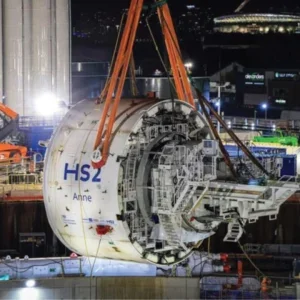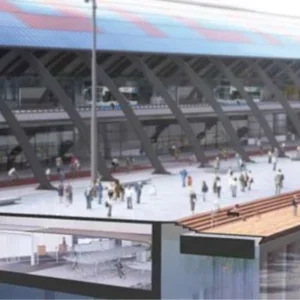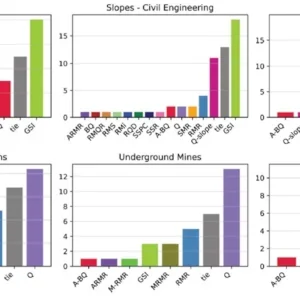The quadrilatero marcheumbria project, located in Central Italy aims to complete two main highways: the 38km-long SS 77 Foligno Civitanova Marche and the 30km-long SS 318 and SS 76 from Perugia to Ancona and the link between these two main routes through Pedemontana delle Marche is 35km long.
The total linear length of tunnelling required is 70km due to the awkward progression of the route through the Apennines.
Works will be completed with 5km-long Intervalley route of Macerata and the roundabout of Civitanova Marche.
The client is Società di scopo Quadrilatero Marche Umbria (ANAS Group), a dedicated project delivery entity with input from the roads authority, local government and local chambers of commerce. All the lots and contracts are design-build by the main contractors, which are Val di Chienti comprising Strabag, CMC, GLF – Co.Ci; and DIRPA 2 made up of Operae (Astaldi), Toto and Ergon.
The total cost of the project amounts to EUR 2.17bn (USD 2.68bn) for lot 1 and EUR 865M (USD 1.07bn) for lot 2. New tunnels all have the same diameters, 13m for sections in Cat. B and 14m for sections in Cat. C1, while the existing tunnels usually have smaller diameters and are in need of reinforcement and re-shaping.
As of 31 January, when Tunnels and Tunnelling spoke to the site teams lot 1 was 86 per cent complete and due to finish by the end of the year and lot 2 is around 58 per cent complete, and due to be finished by 2020.
EXCAVATION METHODS
Andrea Simonini, ANAS engineer and project manager at Quadrilatero Marche Umbria, explains that the tunnels have been mainly excavated by drill and blast, sometimes employing a jackhammer as well. “Jackhammer has been used in all lithologies where the use of explosives could damage face stability. The use of explosives has also been prohibited close to urban areas such Serravalle and Muccia during the night time. “We have also adopted the jackhammer for profiling operations during excavation where it was necessary to ensure the correct shape of the tunnel.”
A sole gripper TBM has been used for the Gola Rossa emergency tunnel. “This 4m-diameter TBM was manufactured by Voest Alpine and assembled by Palmieri,” Simonini says. “We generally avoided the use of TBMs because the tunnels are split up and discontinuous. They are also through calcareous ground with a large number of voids, which meant we couldn’t justify the costs associated with a TBM.
“Work to date has seen the tunnels on the main routes completed and the next to be built are on the Pedemontana delle Marche.”
GEOLOGY
Geological surveys were undertaken during the design phase. The surveys revealed different types of ground, ranging from porous calcareous units to Majolica and White/Pinkish Scaglia in the area of Fabriano SS 76 and along the central side of the SS 77 Foligno-Civitanova Marche.
Majolica and Scaglia White/Pinkish are both strong rocks. Maiolica (Lower Cretaceous 120-140 Ma) has a Geological Strength Index (GSI) between 37 and 67, and an Intact Rock Strength between 90 and 170 MPa.
White/Pinkish Scaglia (Paleocene/Cretacico Upper 44/96 Ma) has a GSI between 30 and 65, and an Intact Rock Strength between 80 to 110MPa.
In the Pedemontana region the geology is clay marls and marl clays, which are also found on the SS318.
Simonini adds, “It was in these conditions that we decided that we shouldn’t excavate with a TBM so we decided to drill with a jackhammer or only with an excavator, and then blast,” Simonini says. “In some cases we needed to reinforce the core of the face as the soils are friable.”
A temporary lining was installed consisting of steel ribs and sometimes sprayed concrete lining on the face. This only happened when the face showed short term instability in the presence of marly clays and marlyarenaceous. The permanent lining is composed of concrete sections cast in situ. These sections have different thicknesses ranging from 0.5 to 1.4m in according to geotechnical features of rock formations. Prior to lining, a waterproofing membrane was installed.
GROUND ENGINEERING
Simoni explains that at the portals they have built bulkheads with micropoles or poles of medium or big diameter, and to support these works they used jet grouting.
“To excavate tunnels in unstable conditions and soft ground, we adopted the pipe umbrella method above the excavation face through steel or fibreglass tubes,” Simonini adds.
Spoil
A number of depots have been provided for spoil removal, divided according to the features of the material. For example calcareous, majolica and White/Pinkish Scaglia have mostly been sold and used to produce concrete.
Other spoil comprising materials such as as clays and marls has been sent to dumps or used to fill in old quarries in the region.
CHALLENGES
Simonini explains that the main challenge for lot 1 is the excavation of 44km of tunnels in only four years. “Another difficult task was the in-situ lining of tunnels over 1,000m long,” he says. “This methodology is not popular in Italy due to some executive and maintenance issues reported.”
On the contrary, concrete pavements in long tunnels can be viewed as the best choice as they require less frequent repair and rehabilitation in comparison with asphalt, if proper designed and constructed.
Moreover, they contribute to safety (non inflammable, no smoke development in case of fire, resistant against fuel and oil) and have a bright surface, which saves energy consumption for illumination. “Regarding lot 2, the main issues on SS76 are related to confined space work, interference with the existing railway, and the presence of aquifers. So we had to split the works into multiple sections, while diverting traffic and suspending the railway services.”
Regarding monitoring, Simonini says that tunnels excavated in rock used convergence nails and strain gauges at the portals. In soft ground, convergence nails were supplemented with strain bars and load cells at the ribs, if required. Inclinometers were in use throughout the tunnel.
HEALTH AND SAFETY CONSIDERATIONS
Simonini explains that the project has been designed in full compliance with Italian Legislative Decree 81 from 2008. In October 2011 an agreement was signed between the region of Umbria, the town of Foligno, various unions, the fire brigade and the local hospital to provide prompt intervention in case of future accidents,” he says. “This agreement aims to increase the number of controls and supervision on the worksite, and also includes a training course.
“Some areas have even been set up for emergency helicopters assistance to reduce the time taken to transport injured people from the site to the hospital.
“Beyond this agreement, a safety committee to prevent any kind of accident has been also set up.”
Unfortunately, three workers died in fatal workplace accidents and some other workers have been seriously injured between 2010 and 2011.
Marco Proietti, a spokesperson from the Filca-Naz union, confirmed that the project is quite complex. “There are 70km of tunnels in really confined spaces, in gorges between mountains so the risk is extremely high.
“Regarding the quality of materials, there was a tunnel built with insufficient thickness of concrete but after some reports it was properly adjusted. ”






